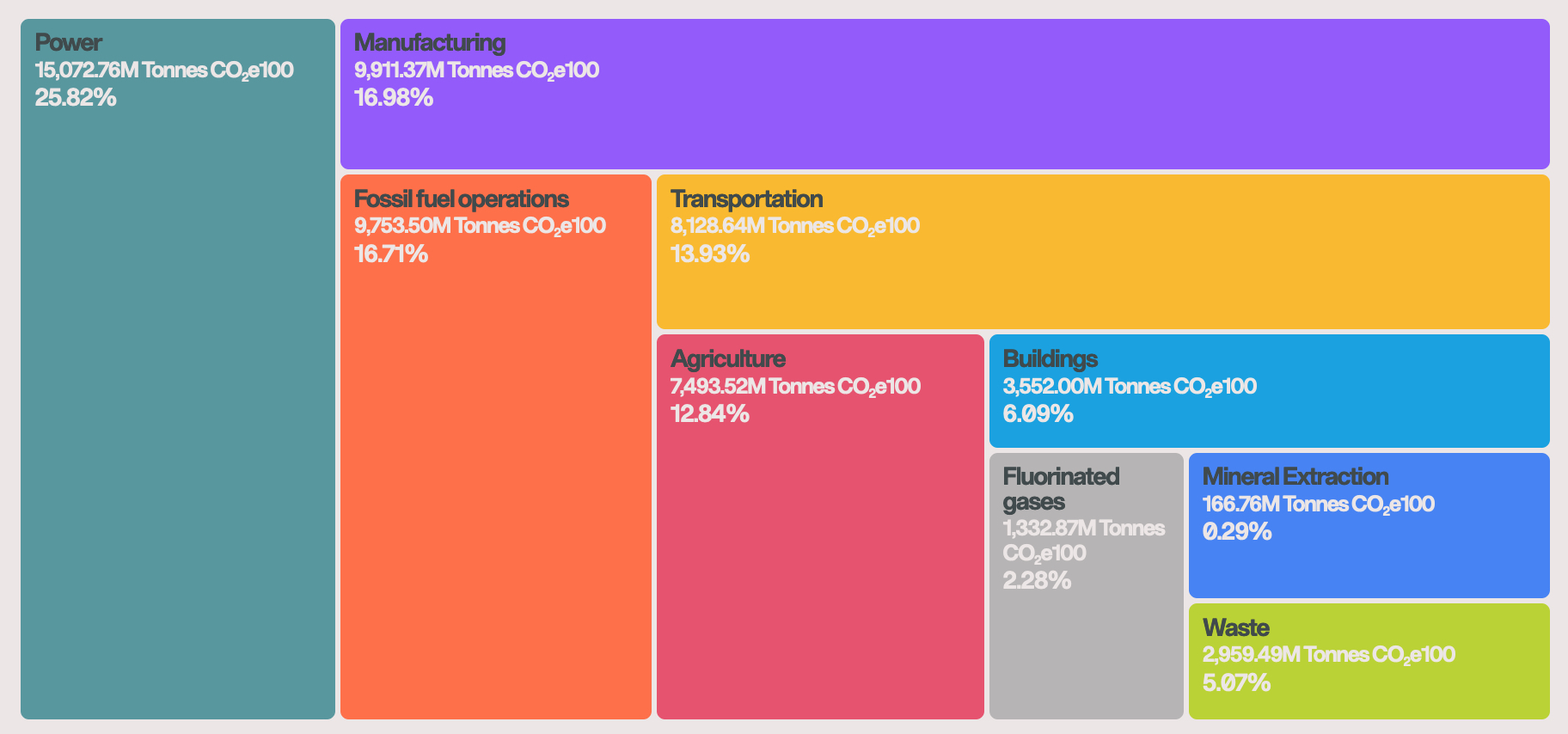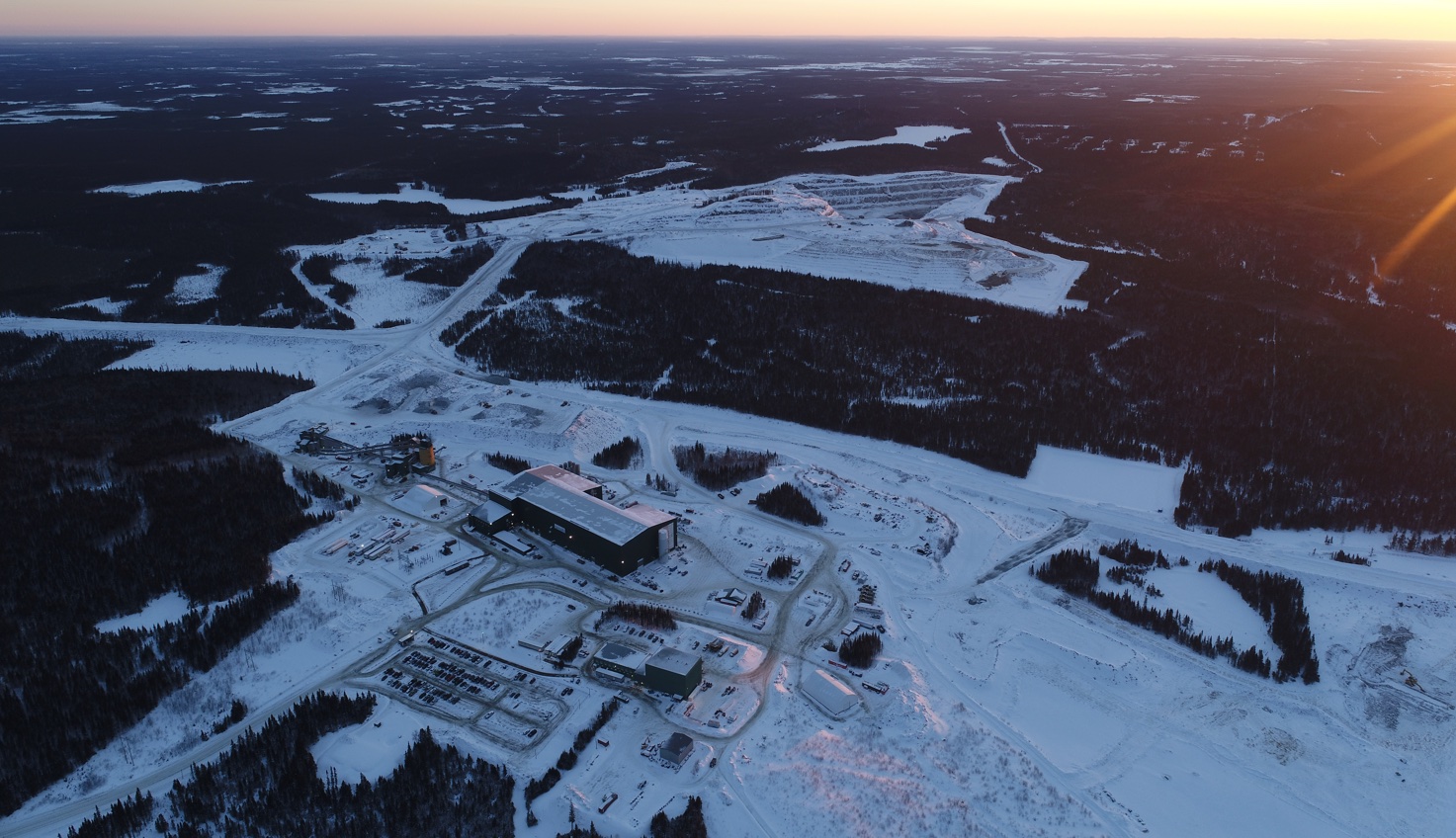Tesla, General Motors (GM) and others have signed an agreement to use a database tracking greenhouse gas emissions, with this year’s report having been shared by U.S. Vice President Al Gore at the COP28 climate conference this weekend.
The database, dubbed Climate TRACE, was created by Gore’s global climate coalition in an attempt to keep close track of supply chain emissions, according to a report from Fortune. It’s expected to use a combination of tools such as satellites and machine learning to track ongoing greenhouse gas emissions from potential pollution sources around the world.
“We are here at this COP in particular because this is the year of the Global Stocktake,” Gore said in reference to tracking progress on Paris Agreement goals. “Climate TRACE is really the only independent comprehensive source of accurate data on which a stocktake can be made.”
With coverage of over 350 million sources of greenhouse gas pollution sites, including mining areas, steel mills, and power plants, the database is expected to give companies a comprehensive, independent look at emissions to help them build low-emissions supply chains.
Initially debuted in 2020, coalition co-founder Gavin McCormick pointed out that the database comes as an important alternative to self-reported information from suppliers, adding that it will help companies select partners that are also advancing decarbonization goals.
Tesla, GM, Polestar, and non-auto companies like Boeing and Muir AI have agreed to use the Climate TRACE data to learn more about steel and aluminum supplier emissions, while others intend to use the database to find cleaner manufacturing sources that can onboard new customers without substantially raising costs.
58.37 billion Tonnes CO2e100. Credit: Climate TRACE
The current work with companies on steel and aluminum supplier emissions is the coalition’s first “proof of concept,” McCormick says, though it plans to expand partnerships next year to address supply chains for beef, rice, lumber and cement products. It’s also looking to publish air pollution information in the database on either a weekly or a monthly basis.
Mallory Barnes, NASA carbon monitoring system member and assistant professor at the Indiana University School of Public and Environmental Affairs, notes that while machine learning models can evaluate tons of emissions data, they can also risk overlooking certain emission sources or “infrequent but very consequential events,” such as methane plumes.
Climate TRACE also includes uncertainty estimates and confidence levels for each of its assets, according to McCormick. These ratings are expected to help users take into account outlier events by assigning low confidence and high uncertainty ratings to industries and companies in which irregular incidents comprise a high proportion of emissions.
“What [it] looks like is going on is that a lot of countries are kind of measuring the stuff they know about and assuming the rest is zero,” McCormick said, noting that’s simply not the case.
Being a company that manufactures electric vehicles (EVs) and other renewable energy products, Tesla has been a strong proponent of strict emissions rules. In 2021, Tesla urged a U.S. appeals court to reinstate higher penalties on emissions violations in order to help spur on the widespread adoption of EVs.
You can view the Climate TRACE emissions map here, or you can look at the database’s country and sector inventories here.
EVs to increase almost tenfold by 2030 under current policies: IEA
What are your thoughts? Let me know at zach@teslarati.com, find me on X at @zacharyvisconti, or send your tips to us at tips@teslarati.com.

News
Tesla starts showing how FSD will change lives in Europe
Local officials tested the system on narrow country roads and were impressed by FSD’s smooth, human-like driving, with some calling the service a game-changer for everyday life in areas that are far from urban centers.

Tesla has launched Europe’s first public shuttle service using Full Self-Driving (Supervised) in the rural Eifelkreis Bitburg-Prüm region of Germany, demonstrating how the technology can restore independence and mobility for people who struggle with limited transport options.
Local officials tested the system on narrow country roads and were impressed by FSD’s smooth, human-like driving, with some calling the service a game-changer for everyday life in areas that are far from urban centers.
Officials see real impact on rural residents
Arzfeld Mayor Johannes Kuhl and District Administrator Andreas Kruppert personally tested the Tesla shuttle service. This allowed them to see just how well FSD navigated winding lanes and rural roads confidently. Kruppert said, “Autonomous driving sounds like science fiction to many, but we simply see here that it works totally well in rural regions too.” Kuhl, for his part, also noted that FSD “feels like a very experienced driver.”
The pilot complements the area’s “Citizen Bus” program, which provides on-demand rides for elderly residents who can no longer drive themselves. Tesla Europe shared a video of a demonstration of the service, highlighting how FSD gives people their freedom back, even in places where public transport is not as prevalent.
What the Ministry for Economic Affairs and Transport says
Rhineland-Palatinate’s Minister Daniela Schmitt supported the project, praising the collaboration that made this “first of its kind in Europe” possible. As per the ministry, the rural rollout for the service shows FSD’s potential beyond major cities, and it delivers tangible benefits like grocery runs, doctor visits, and social connections for isolated residents.
“Reliable and flexible mobility is especially vital in rural areas. With the launch of a shuttle service using self-driving vehicles (FSD supervised) by Tesla in the Eifelkreis Bitburg-Prüm, an innovative pilot project is now getting underway that complements local community bus services. It is the first project of its kind in Europe.
“The result is a real gain for rural mobility: greater accessibility, more flexibility and tangible benefits for everyday life. A strong signal for innovation, cooperation and future-oriented mobility beyond urban centers,” the ministry wrote in a LinkedIn post.
News
Tesla China quietly posts Robotaxi-related job listing
Tesla China is currently seeking a Low Voltage Electrical Engineer to work on circuit board design for the company’s autonomous vehicles.

Tesla has posted a new job listing in Shanghai explicitly tied to its Robotaxi program, fueling speculation that the company is preparing to launch its dedicated autonomous ride-hailing service in China.
As noted in the listing, Tesla China is currently seeking a Low Voltage Electrical Engineer to work on circuit board design for the company’s autonomous vehicles.
Robotaxi-specific role
The listing, which was shared on social media platform X by industry watcher @tslaming, suggested that Tesla China is looking to fill the role urgently. The job listing itself specifically mentions that the person hired for the role will be working on the Low Voltage Hardware team, which would design the circuit boards that would serve as the nervous system of the Robotaxi.
Key tasks for the role, as indicated in the job listing, include collaboration with PCB layout, firmware, mechanical, program management, and validation teams, among other responsibilities. The role is based in Shanghai.
China Robotaxi launch
China represents a massive potential market for robotaxis, with its dense urban centers and supportive policies in select cities. Tesla has limited permission to roll out FSD in the country, though despite this, its vehicles have been hailed as among the best in the market when it comes to autonomous features. So far, at least, it appears that China supports Tesla’s FSD and Robotaxi rollout.
This was hinted at in November, when Tesla brought the Cybercab to the 8th China International Import Expo (CIIE) in Shanghai, marking the first time that the autonomous two-seater was brought to the Asia-Pacific region. The vehicle, despite not having a release date in China, received a significant amount of interest among the event’s attendees.
Elon Musk
Elon Musk and Tesla AI Director share insights after empty driver seat Robotaxi rides
The executives’ unoccupied tests hint at the rapid progress of Tesla’s unsupervised Robotaxi efforts.

Tesla CEO Elon Musk and AI Director Ashok Elluswamy celebrated Christmas Eve by sharing personal experiences with Robotaxi vehicles that had no safety monitor or occupant in the driver’s seat. Musk described the system’s “perfect driving” around Austin, while Elluswamy posted video from the back seat, calling it “an amazing experience.”
The executives’ unoccupied tests hint at the rapid progress of Tesla’s unsupervised Robotaxi efforts.
Elon and Ashok’s firsthand Robotaxi insights
Prior to Musk and the Tesla AI Director’s posts, sightings of unmanned Teslas navigating public roads were widely shared on social media. One such vehicle was spotted in Austin, Texas, which Elon Musk acknowleged by stating that “Testing is underway with no occupants in the car.”
Based on his Christmas Eve post, Musk seemed to have tested an unmanned Tesla himself. “A Tesla with no safety monitor in the car and me sitting in the passenger seat took me all around Austin on Sunday with perfect driving,” Musk wrote in his post.
Elluswamy responded with a 2-minute video showing himself in the rear of an unmanned Tesla. The video featured the vehicle’s empty front seats, as well as its smooth handling through real-world traffic. He captioned his video with the words, “It’s an amazing experience!”
Towards Unsupervised operations
During an xAI Hackathon earlier this month, Elon Musk mentioned that Tesla owed be removing Safety Monitors from its Robotaxis in Austin in just three weeks. “Unsupervised is pretty much solved at this point. So there will be Tesla Robotaxis operating in Austin with no one in them. Not even anyone in the passenger seat in about three weeks,” he said. Musk echoed similar estimates at the 2025 Annual Shareholder Meeting and the Q3 2025 earnings call.
Considering the insights that were posted Musk and Elluswamy, it does appear that Tesla is working hard towards operating its Robotaxis with no safety monitors. This is quite impressive considering that the service was launched just earlier this year.










